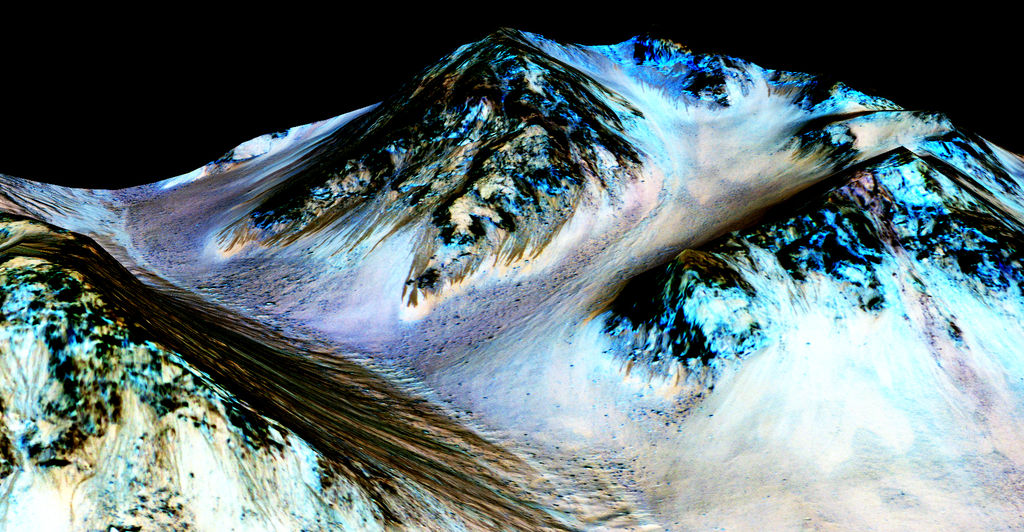It’s been a speculation for quite some time now: Could there be life on Mars? With NASA’s recent discovery of water on the red planet, scientists have belief that there may just be potential Martians living there.

Using an imaging spectrometer, photos from a high-resolution camera on NASA’s Mars Reconnaissance Orbiter (MRO) showed definitive signs of water on the planet, answering the question: if life did arise, it could survive there.
Scientists detected signatures of hydrated minerals on slopes where mysterious streaks are seen. Dark streaks appear to flow over time during warm seasons and fade during colder seasons.
“Our quest on Mars has been to 'follow the water,' in our search for life in the universe, and now we have convincing science that validates what we've long suspected,” said John Grunsfeld, astronaut and associate administrator of NASA's Science Mission Directorate in Washington. “This is a significant development, as it appears to confirm that water — albeit briny — is flowing today on the surface of Mars.”
These downhill flows, better known as recurring slope lineae (RSL), have often been described as relative to liquid water. Spectrometer observations show signatures of hydrated salts on the slopes, which point to what that relationship may be to these dark features. The hydrated salts would lower the freezing point, much like salts do here on Earth when placed on roads with snow or ice. Scientists say it's likely a shallow surface flow, with enough water to explain the darkening.

“We found the hydrated salts only when the seasonal features were widest, which suggests that either the dark streaks themselves or a process that forms them is the source of the hydration. In either case, the detection of hydrated salts on these slopes means that water plays a vital role in the formation of these streaks,” said Lujendra Ojha of the Georgia Institute of Technology (Georgia Tech) in Atlanta, lead author of a report on these findings published Sept. 28 by Nature Geoscience.
Mystery still remains as to where the water is coming from.
“There are two basic origins for the water: from above or from below,” said Alfred S. McEwen, a professor of planetary geology at the University of Arizona and the principal investigator of images from NASA’s Mars Reconnaissance Orbiter. The salts may be acting like a sponge, absorbing moisture out of the air, but measurements indicate low humidity on Mars. However, that idea cannot totally be ruled out, especially if the lower part of the atmosphere measures a higher humidity than scientists currently predict.
“We have very poor measurements of relative humidity near the surface,” Dr. McEwen said.
The other possibility is underground aquifers, which would appear frozen solid during winter, and melt during summer, seeping to the surface.
Further research will have to be conducted. But as for now, this is a breakthrough in an ongoing scientific hypothesis.
And since liquid water is one of the essentials to life, it raises the question about whether Mars, which appears barren and dry, could possess some sort of habilitation for life.
Advertisement
Learn more about Electronic Products Magazine





